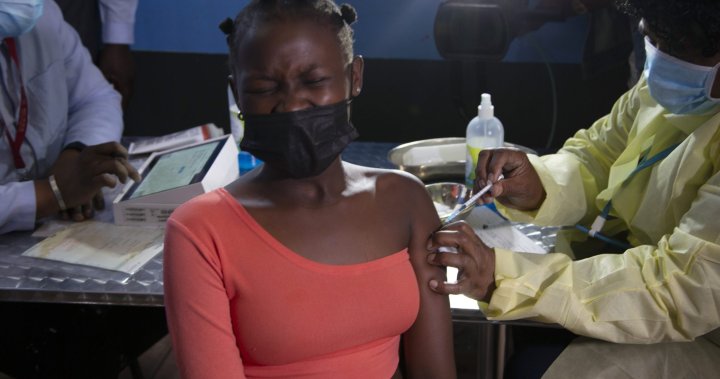
‘A huge concern’: South Africa scientists scramble to combat spread of Omicron variant
Global News
In the space of two weeks, the Omicron variant has sent South Africa from a period of low transmission to rapid growth of new confirmed cases.
As the world grapples with the emergence of the new highly transmissible variant of COVID-19, worried scientists in South Africa — where omicron was first identified — are scrambling to combat its lightning spread across the country.
In the space of two weeks, the omicron variant has sent South Africa from a period of low transmission to rapid growth of new confirmed cases. The country’s numbers are still relatively low, with 2,828 new confirmed cases recorded Friday, but omicron’s speed in infecting young South Africans has alarmed health professionals.
“We’re seeing a marked change in the demographic profile of patients with COVID-19,” Rudo Mathivha, head of the intensive care unit at Soweto’s Baragwanath Hospital, told an online press briefing.
“Young people, in their 20s to just over their late 30s, are coming in with moderate to severe disease, some needing intensive care. About 65% are not vaccinated and most of the rest are only half-vaccinated,” said Mathivha. “I’m worried that as the numbers go up, the public health care facilities will become overwhelmed.”
She said urgent preparations are needed to enable public hospitals to cope with a potential large influx of patients needing intensive care.
“We know we have a new variant,” said Mathivha. “The worst case scenario is that it hits us like delta … we need to have critical care beds ready.”
What looked like a cluster infection among some university students in Pretoria ballooned into hundreds of new cases and then thousands, first in the capital city and then to nearby Johannesburg, South Africa’s largest city.
Studying the surge, scientists identified the new variant that diagnostic tests indicate is likely responsible for as many as 90% of the new cases, according to South Africa’s health officials. Early studies show that it has a reproduction rate of 2 — meaning that every person infected by it is likely to spread it to two other people.











